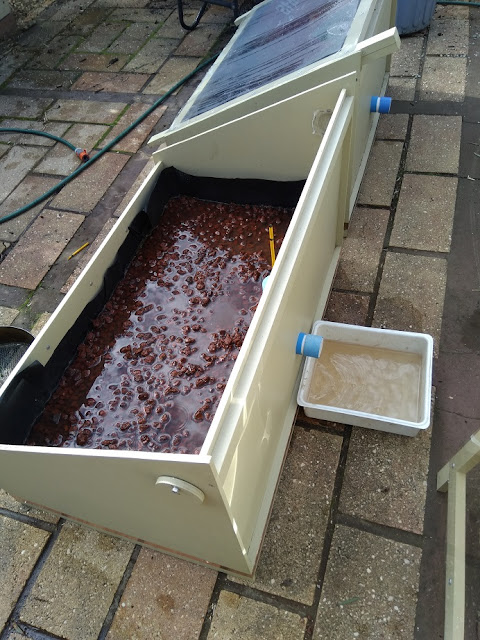The
cover is made from 19 x 42mm untreated pine, and after cutting to
length the components are screwed together as shown above using two 75mm
countersunk galvanised wood screws at each joint. It's best to
pre-drill the holes for these screws because there isn't much space, and
you must avoid splitting the timber.
Two screws are needed in each joint to keep the frame flat, but only two 35mm countersunk
galvanised wood screws are needed to hold each stop in position, and
there is no need to pre-drill the holes for these screws.
Paint the assembled frame with 2 coats of weatherproof water based acrylic paint.
The sketch shows the screw positions needed to secure the polycarbonate
cover (winter use). Twenty-four 15mm galvanised button head screws are
needed to hold the plastic sheet flat enough to keep insects and
extreme weather out of the EcoPropagator.
In warmer conditions
Vegenet replaces the polycarbonate cover using four 30mm galvanised
bullet head nails as hooking points (one in each corner) to hold it in
place. It keeps airborne pests out and reduces sunlight intensity by
over 20%.
The extra lengths of each leg of the cover frame at
the top and bottom are handles designed to make it easy to take the
frame off the bed and replace it later. The stop locates the frame so
that the cross members line up with the top of the front and rear panels
to seal the unit from insect penetration and drafts.
|














No comments:
Post a Comment